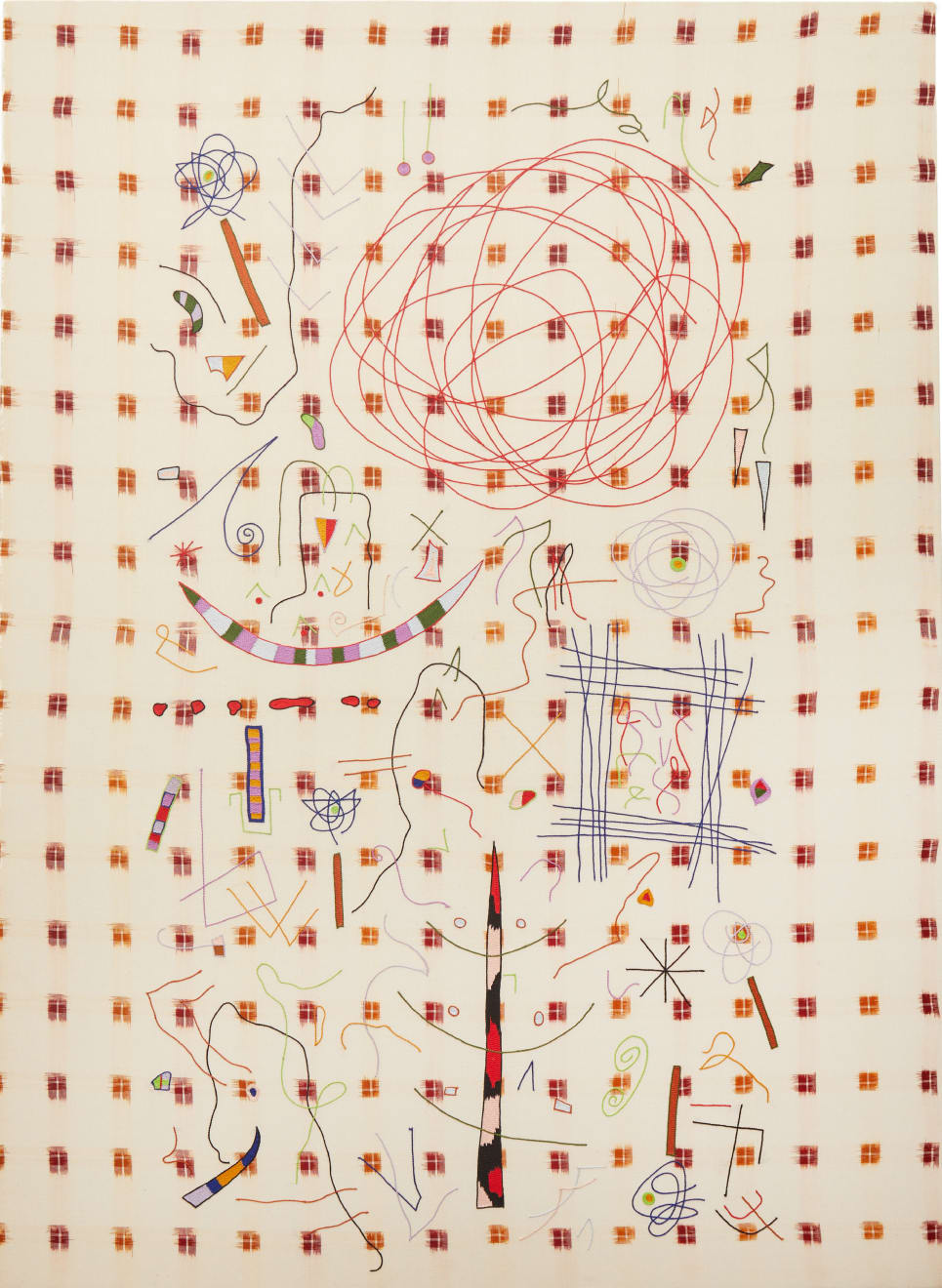-
Artworks
Areez Katki b. 1989
Sight of wet laundry, 2023Cotton embroidery on found cloth
(HSN code: 970110)Total: 60.2 x 45.2 inches
Stretched: 53.9 x 39.3 inchesCopyright Areez Katki, 2023Exploring the tactile and sensuous nature of textiles has been a recurring focus in Katki’s practice over the past decade. As he gathers and repurposes old, found and sometimes remnants...Exploring the tactile and sensuous nature of textiles has been a recurring focus in Katki’s practice over the past decade. As he gathers and repurposes old, found and sometimes remnants of newer textiles, we might see how each bolt of cloth holds close associations with material memory, sometimes familial and deeply personal; sometimes more political and historic threads emerge. Though as objects themselves, the use of textiles implies a complex set of politics: while on one hand they speak of industry, culture and the development of manmade crafts, on the other they are intimate substrates that our bodies collide, rub and coalesce with; sometimes textiles are gendered and have associations with domesticity and ritual. While holding all these politics together in his mind, Katki mines the personal and the historic when formulating his embroidered drawings, which puncture and suture alike these surfaces that we view so close to quotidian existences. The stories that we witness in his embroidery often break into abstraction: a style of proto-writing and non-linguistic communication that has become a hallmark of Katki’s visual language.
This panel is based on a childhood memory of Katki’s grandmother and her helper cleaning large sheets of linen in the spare room of their old Parsi colony flat in Tardeo, Mumbai—a space still dedicated to the storage, laundering and sorting of domestic accouterments. Using the sensory receptors of smell, touch and sound, Katki has recreated what he imagines as a primarily visual—but perhaps also multisensory—revisitation of the memory in the form of a dynamic abstraction that posits the qualities of cool water swirling and splashing, the flapping bolts of wet cloth suspended against a jute rope and various domestic implements scattered around a small washing enclosure. The scale and material qualities of the work lend further to conveying the qualities of caustic light, rhythmic movement and splendor of these simple acts of care—they speak of the artist’s sensitive approach and fondness for his grandmother, who passed away a year ago, and has featured more prominently in his practice than any other figure—as a consistent interlocutor of pedagogical impartations.
1of 2
Join our mailing list
* denotes required fields
We will process the personal data you have supplied in accordance with our privacy policy (available on request). You can unsubscribe or change your preferences at any time by clicking the link in our emails.
